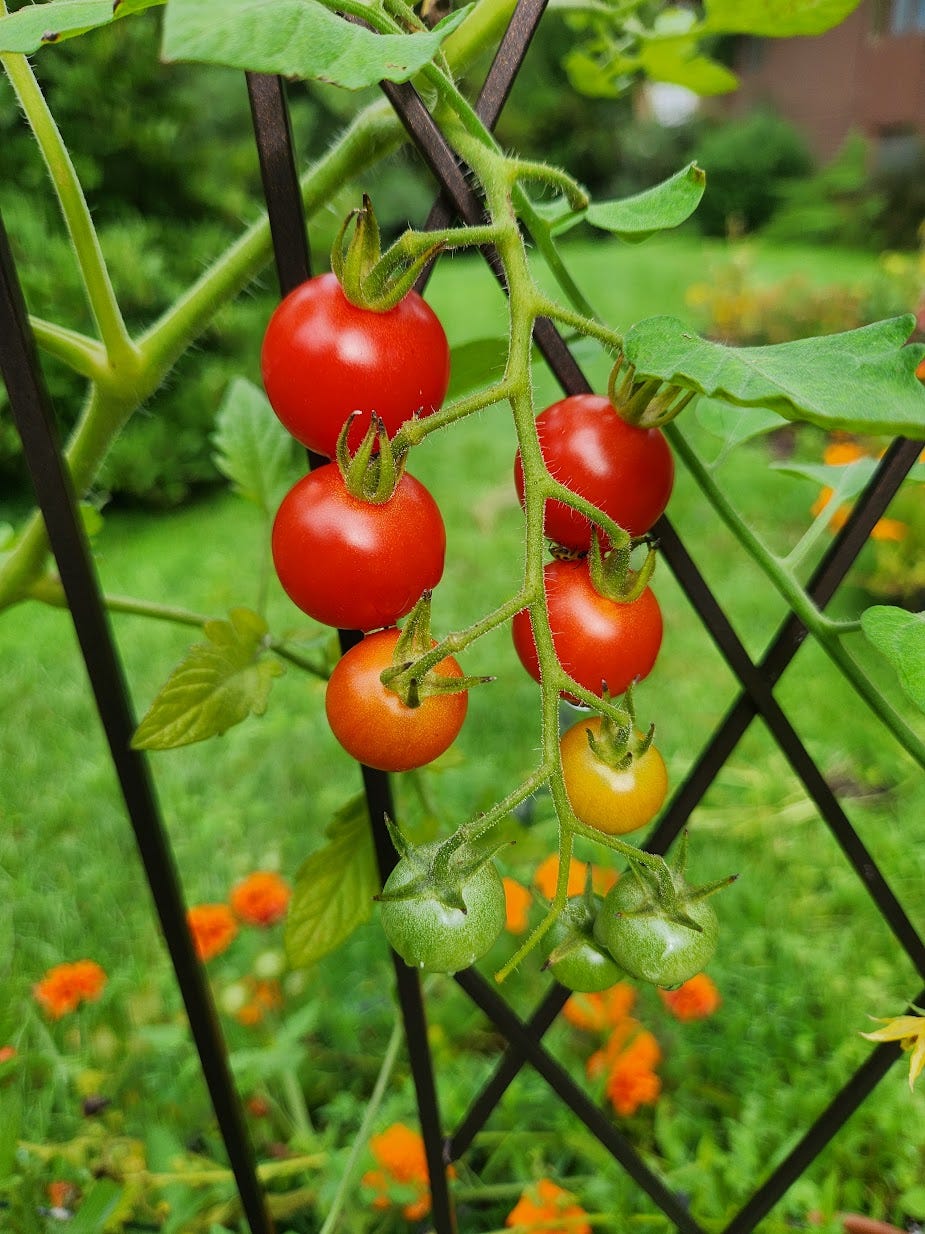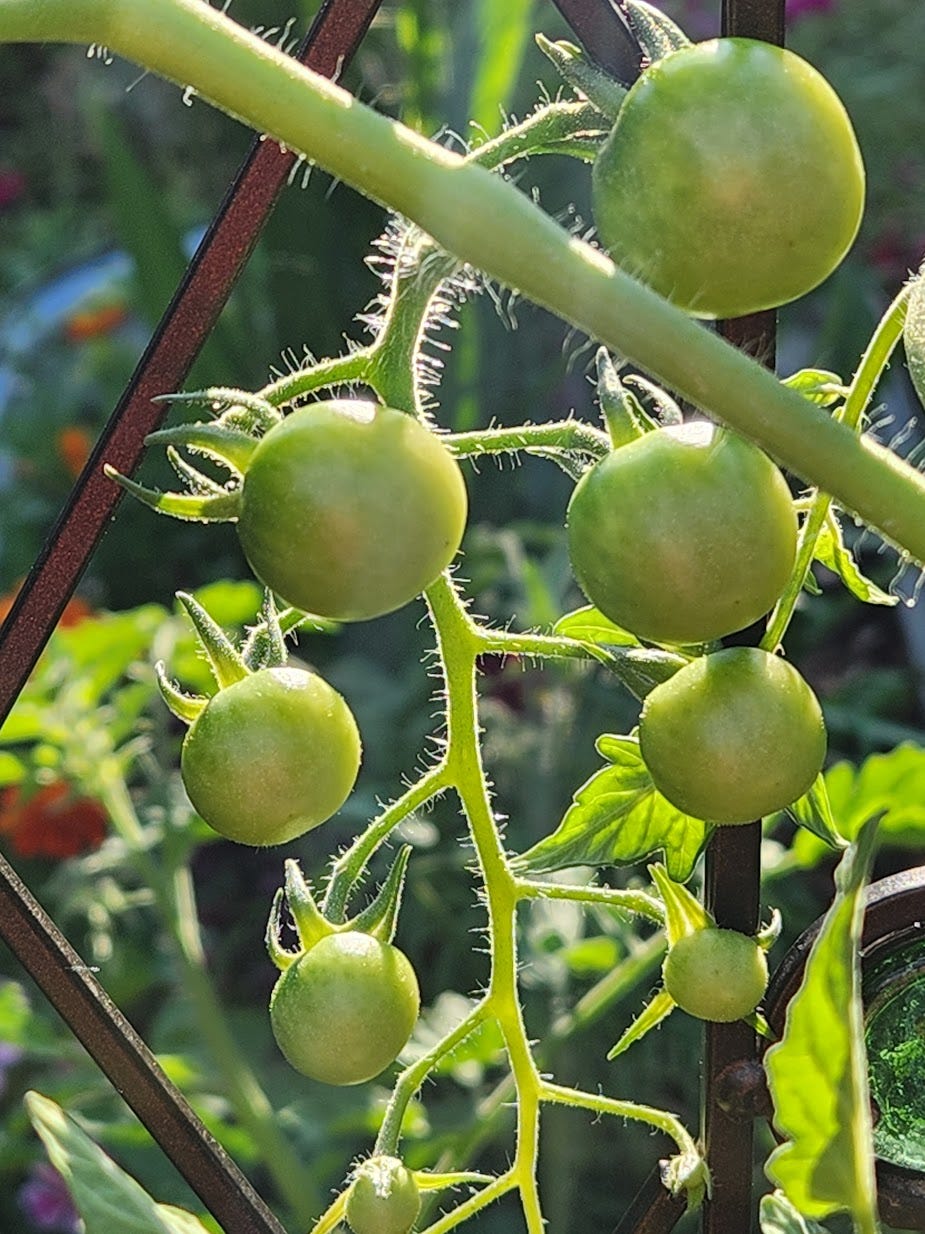Let’s Grow Tomatoes!
The Basics
Easy plants to start from seed indoors are tomatoes. They’lll transplant easily outside when you’re ready, and starting indoors, as always, means a longer growing season and more fruit.
There is a bewildering number of varieties out there so your choice will depend on how you use tomatoes. Some main categories:
🍅 Beefsteak or slicing tomatoes for sandwiches (or eating with some salt as a snack!)
🍅 Cherry tomatoes for salads
🍅 Paste tomatoes for sauces (Roma tomatoes is another name.)
Those are the main types. You’ll also see heirloom varieties and hybrids, which both have their merits. Heirlooms are prized for their flavor, while newer varieties may be bred for better pest/disease resistance and for new flavor profiles.
Another category is determinate and indeterminate, and this refers to the plant’s size. Determinate tomatoes will grow to a certain height, set fruit and be done. This is helpful if your garden space is small, because indeterminate tomatoes will take over if you don’t stop them. They are technically vines and will continue to spread and produce fruit until frost. Most tomato varieties are indeterminate, by the way.
Because they spread, indeterminate tomato plants need supports and those should be in place while the plant is still fairly small so you don’t disturb the roots. Tomato cages are fine, but you can use anything that will help the plant stay upright (bamboo and twine, sticks, DIY whatever you want.) I use colorful cages and decorative supports because I like whimsy but the plant does not care!
Tomato care is important. I often grow them in raised beds or large containers because I can provide richer soil, but if you are planting them in the ground, make sure to amend your soil from year to year so the soil continues to becomes better. (Amend means providing organic matter like mulch to break down over time and enrich the soil.)
Because indeterminate plants are fierce growers, you also have to stay on top of watering. Things that grow quickly tend to need a lot of water. And then watering frequently in containers leeches the soil of nutrients so I fertilize with an organic mix (because I plan to eat them) once a week. Blossom end rot (fruit rots at the bottom) is a frequent problem that occurs usually because of inadequate watering.
Once the plants have reached a few feet high, I trim off the bottom branches to provide more air circulation and to prevent disease. Tomatoes are susceptible to some diseases, like all plants, but the most important preventative is a good, healthy start. Plenty of sunshine, plenty of water for a big harvest!





